Halopemide
Synonym(s):N-(2-(4-(5-Chloro-2-oxo-1-benzimidazolinyl)piperidino)ethyl)-p-fluorobenzamide
- CAS NO.:59831-65-1
- Empirical Formula: C21H22ClFN4O2
- Molecular Weight: 416.88
- MDL number: MFCD00866684
- SAFETY DATA SHEET (SDS)
- Update Date: 2025-12-26 16:58:18
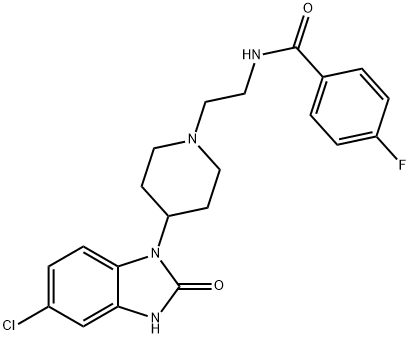
What is Halopemide?
The Uses of Halopemide
Halopemide acts as a small molecule inhibitor for phospholipase D (PLD), an important phosphlipid metabolism regulator which may be useful in the therapeutic treatment of Alzheimer’s Disease and other brain disorders.
The Uses of Halopemide
Antipsychotic.
The Uses of Halopemide
Halopemide, a non-specific phospholipase D (PLD) antagonist, may be used with selective PLD antagonists (CAY10593, a PLD1 antagonist; CAY10594 or ML298, selective PLD2 antagonist) to help define the role and physiological effects regulated by phospholipase D enzymes. Halopemide may be used as the basis of the design and development of more selective PLD antagonists.
What are the applications of Application
Halopemide is a dopamine inhibitor and phospholipase D2 inhibitor
Biological Activity
halopemide is a phospholipase d (pld) inhibitor.phospholipase d (pld) is a key enzyme for the production of phosphatidic acid, a lipid second messenger. phosphatidic acid involves in both g protein-coupled receptor and receptor tyrosine kinase signal transduction networks.
Biochem/physiol Actions
Halopemide is a dopamine receptor antagonist and a phospholipase D2 inhibitor. Halopemide may be used as a screen to identify inhibitors of human PLD2 using an in vitro biochemical assay. It is also inhibitory at benzodiazepine binding sites.
in vitro
in a previous study, the ic50 of halopemide against pld2 was found to be similar to that previously reported, but the compound had no preference for pld2 over pld1 [1].
in vivo
animal study showed that the halopemide concentration in the rat brain was 10 times less than that of r29800, its chemical analog. however, the levels were the same in the pituitary gland. the highest level of halopemide was found to be in septal and thalamic areas while the neuroleptics were concentrated in the caudate nucleus. moreover, in the caudate nucleus, halopemide was far less particle-bound [2].
References
[1] scott, s. a.,selvy, p.e.,buck, j.r., et al. design of isoform-selective phospholipase d inhibitors that modulate cancer cell invasiveness. nature chemical biology 5(2), 108-117 (2009).
[2] loonen aj, van wijngaarden i, janssen pa, soudijn w. regional localization of halopemide, a new psychotropic agent, in the rat brain. eur j pharmacol. 1978 aug 15;50(4):403-8.
[3] de cuyper h, van praag hm, verstraeten d. the clinical significance of halopemide, a dopamine-blocker related to the butyrophenones. neuropsychobiology. 1984;12(4):211-6.
Properties of Halopemide
| Density | 1.337±0.06 g/cm3(Predicted) |
| storage temp. | 2-8°C |
| solubility | DMSO: >10mg/mL |
| form | powder |
| pka | 11.10±0.30(Predicted) |
| color | off-white |
Safety information for Halopemide
| Signal word | Warning |
| Pictogram(s) |
 Exclamation Mark Irritant GHS07 |
| GHS Hazard Statements |
H302:Acute toxicity,oral |
Computed Descriptors for Halopemide
New Products
4,4-Difluoropiperidine hydrochloride tert-butyl 9-methoxy-3-azaspiro[5.5]undecane-3-carboxylate Indole Methyl Resin N-Isopropylurea N,N-Dicyclohexylcarbodiimide(DCC) MELDRUMS ACID 5-METHYLISOXAZOLE-4-CARBOXYLIC ACID Magnessium Bis glycinate Zinc ascorbate 1-bromo-2-butyne 2-acetamidophenol 9(10H)-anthracenone Erythrosin B, 4-Piperidinopiperidine 2-((4-morpholinophenylamino) (methylthio) methylene) malononitrile 2,4-dihydroxybenzaldehyde 3-(4-morpholinophenylamino)-5-amino-1H-pyrazole-4-carbonitrile Methyl 2-methylquinoline-6-carboxylate 2,6-dichloro-4-nitropyridine 4-Bromo-2-chlorobenzonitrile 2-(benzylamino)acetic acid hydrochloride 4-(tert-Butoxycarbonylamino)but- 2-ynoic acid 3,4-dihydro-2H-benzo[b][1,4]dioxepine 1-Phenyl-1-cycloprppanecarboxylicacidRelated products of tetrahydrofuran

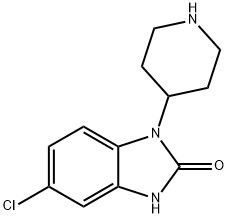
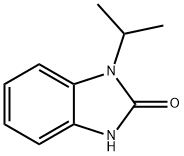


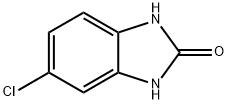
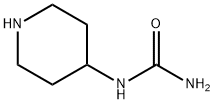
You may like
-
 59831-65-1 Halopemide 98%View Details
59831-65-1 Halopemide 98%View Details
59831-65-1 -
 Halopemide CAS 59831-65-1View Details
Halopemide CAS 59831-65-1View Details
59831-65-1 -
 3-(4-amino-1-oxoisoindolin-2-yl)-1-methylpiperidine-2,6-dione 98%View Details
3-(4-amino-1-oxoisoindolin-2-yl)-1-methylpiperidine-2,6-dione 98%View Details -
 614-19-7 98%View Details
614-19-7 98%View Details
614-19-7 -
 20677-73-0 (2,2-diethoxyethyl)methylamine 98%View Details
20677-73-0 (2,2-diethoxyethyl)methylamine 98%View Details
20677-73-0 -
 3-(4-(hydroxyamino)-1-oxoisoindolin-2-yl)piperidine-2,6-dione 98%View Details
3-(4-(hydroxyamino)-1-oxoisoindolin-2-yl)piperidine-2,6-dione 98%View Details -
 57381-49-4 2-bromo-4-chlorobenzonitrile 98%View Details
57381-49-4 2-bromo-4-chlorobenzonitrile 98%View Details
57381-49-4 -
 4,6-dichloropyrimidine-5-carbaldehyde 98%View Details
4,6-dichloropyrimidine-5-carbaldehyde 98%View Details
5305-40-8
